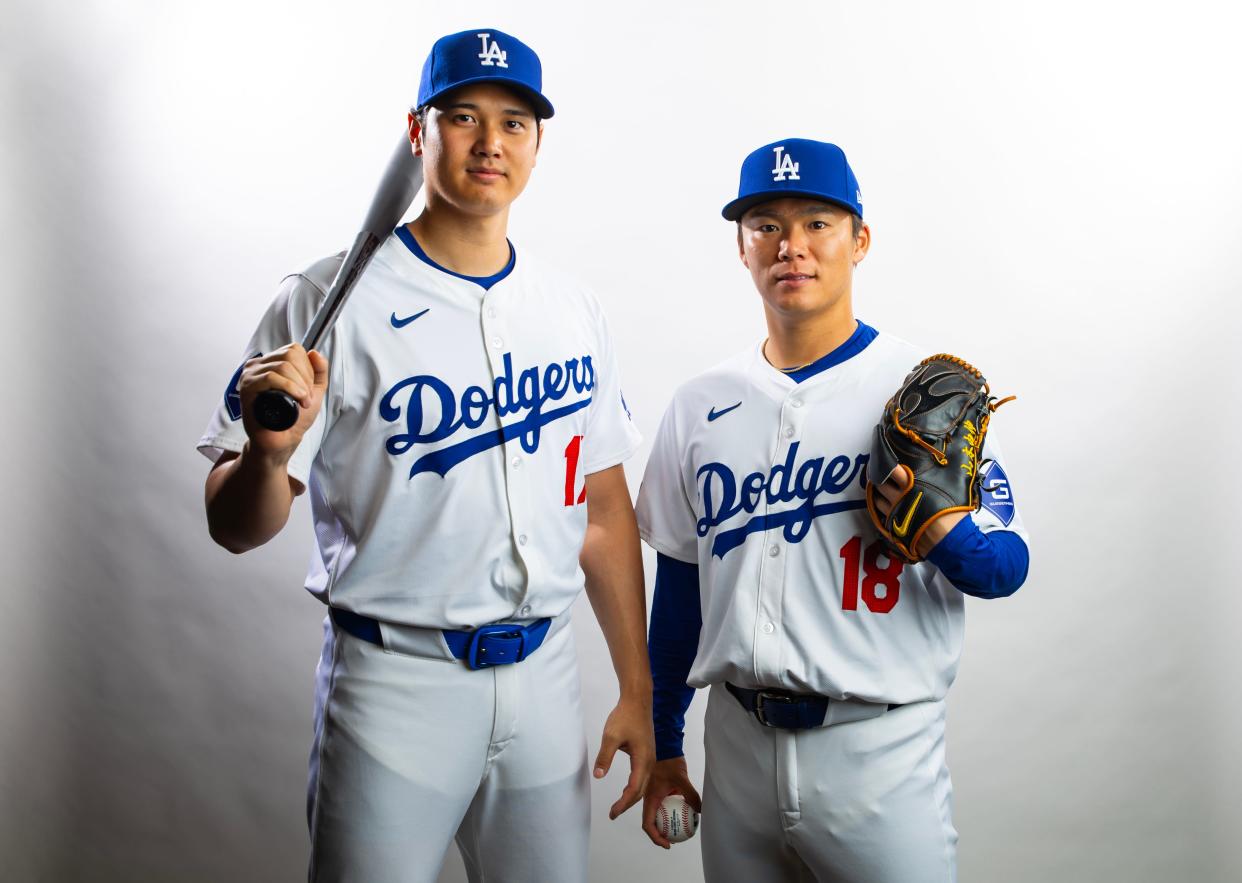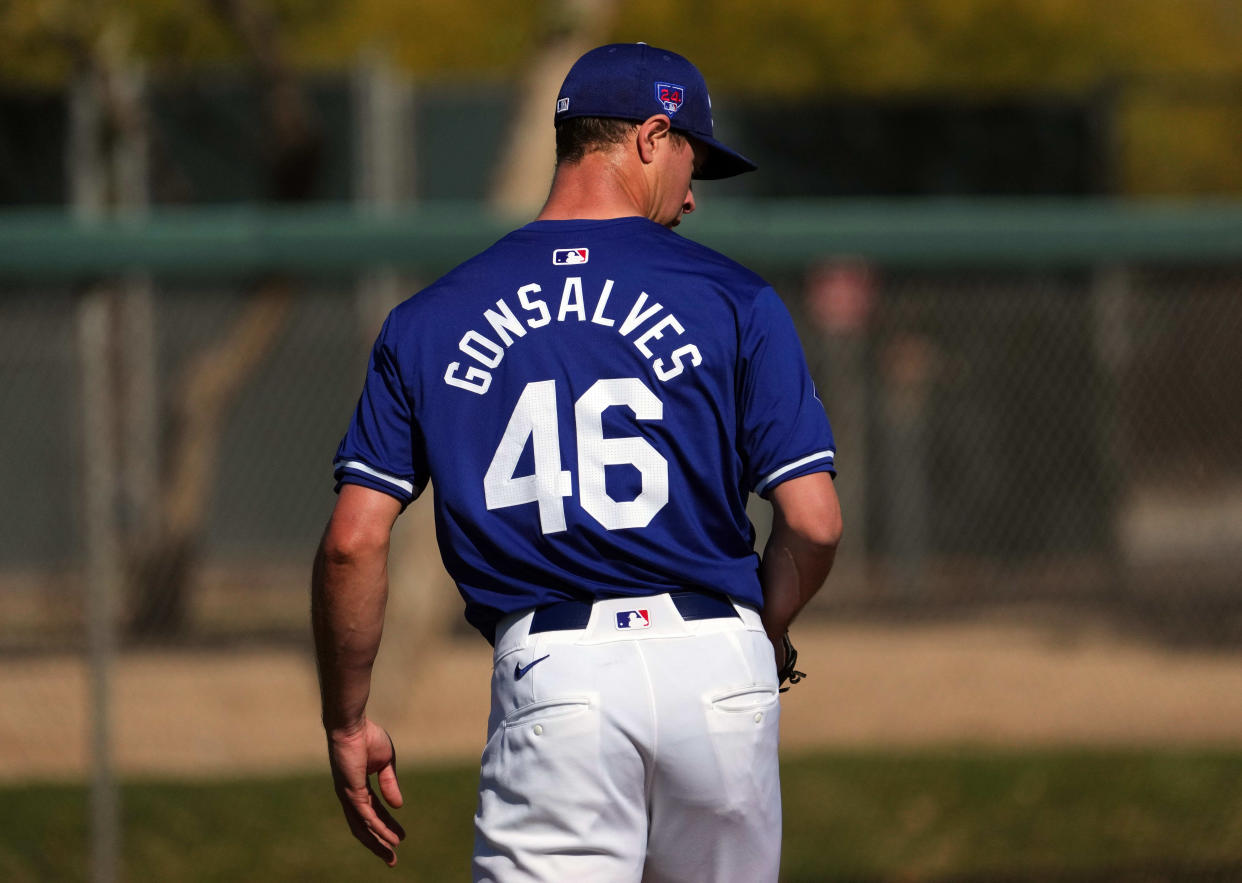Arace: MLB takes its 'Fanatics Experience' to next level, which is a plummet
Last week, Shohei Ohtani posed in a full Los Angeles Dodgers uniform for the first time. The official team photos of the next Babe Ruth showed the five-tool player in a pair of baseball pants that were virtually translucent. Good thing his shirt was tucked.

Major League Baseball has a problem, and it is a problem shared by MLS and the NBA, NFL, NHL and NASCAR, not to mention Formula One and the WWE and ... well, just about every sports entity you can think of.
The problem is the “Fanatics Experience,” which, as far as experiences go, is akin to bunyon surgery.
Technically speaking, it was Nike who screwed up the new MLB uniforms. Nike chose the new fabrics and did the tailoring. Fanatics merely manufactured.
To fans, this distinction means nothing.
Training camps opened earlier this month. If you believe the phrase “pitchers and catchers report” is akin to “Happy New Year,” and you revved up your search engine to hunt for baseball news, what filled your screen was a raft of players talking about their new uniforms in unkind terms. The nameplates were too small, the colors were off, the numbers were misaligned, and the skin-tight pants were see-through, and so on, and so forth.
These were not so much complaints as expressions of mystification. Professional baseball players are supposed to look major league. And they were handed beer-league softball uniforms.
Fans of every sport jumped on social media to say, in effect, “Welcome to our world.” (See: @FanaticsSucks.)
Fanatics has gobbled up reputable companies and created something close to a monopoly in the sports apparel and memorabilia markets. It’s also delving into sports gambling because dealing heroin is more stressful.
If you’re a sports fan – and it doesn’t matter what the sport is – you’ve probably been submitted to the “Fanatics Experience” because Fanatics has, as their website says, “Officially Licensed Everything.” If you want something quick and online, you almost have no other choice.

While it’s probably true that Fanatics has produced some good T-shirts, decent caps and passable hoodies, such is not their reputation. Legion are the stories of Fanatics-brand apparel that is the wrong size, made of cheap material, finished with poor graphics and built to last for one washer/dryer cycle (provided the appliances are set for “delicates”).
This crap isn’t cheap, either.
The MLB players’ union has already lodged a complaint. MLB commissioner Rob Manfred, who is a “Fanatics Experience” in his own right, muttered something about how players will come to embrace or at least get used to the new cut of the new fabrics. Manfred has already destroyed scores of baseball towns with the contraction of the minor leagues. What does he care about uniforms?
While I surfed through the stories that began bubbling up from MLB camps during the midweek, details caught my eye. For instance, The Philadelphia Inquirer noted that new versions of classic uniforms that were always chain-stitched were no longer chain-stitched (Phillies, Cardinals), and logos that were always embroidered were no longer embroidered (Phillies).
I’m of an age where the details, as captured in magazines such as the once-proud Sports Illustrated, were part of the mystique of the big leagues. I might whine about how the details are not so important in the streaming age, but it was the players themselves who were off-put. Like, the Phillies didn’t just make jokes about how their pants didn’t fit and could not be tailored. They were angry about chain-stitching and embroidery, or the lack thereof. They saw these things as sacrilege.
I have a kid who a decade ago found a couple of Kevin Dineen Hartford Whalers jerseys (greatest logo ever) while wandering through a flea market in Australia. Even with a "CCM" label and "made in Canada," they’re probably knockoffs, but they are terrific knockoffs – heavy, cross-stitched and embroidered, with tie-downs in back and everything. And they’ve been bullet-proof.
I also have kids who’ve discarded more than one replica jersey sold by Fanatics. Logos have peeled, numbers have been misaligned, name plates have fallen off the back. And so forth. I don’t even want to talk about the less-expensive Fanatics merch. It’s not worth it.
Hockey fans are discerning about their jerseys, to put it mildly. They were taken aback last year when the NHL announced that, beginning with the 2024-25 season, Fanatics would be supplying players with on-ice uniforms. For the first time, the Fanatics’ logo will be on the game-worn jerseys of professional players.
Fans are used to wearing poorly made Johnny Gaudreau replicas. That is not to say that the pro model Gaudreau will wear on-ice will disintegrate after one cycle through the washing machine. Its relative quality won’t matter to fans.
All they will see is that “F” logo, and what it represents to them, for the next 10 years.
This article originally appeared on The Columbus Dispatch: Nike may be responsible for MLB uniform problem, but fans know better
